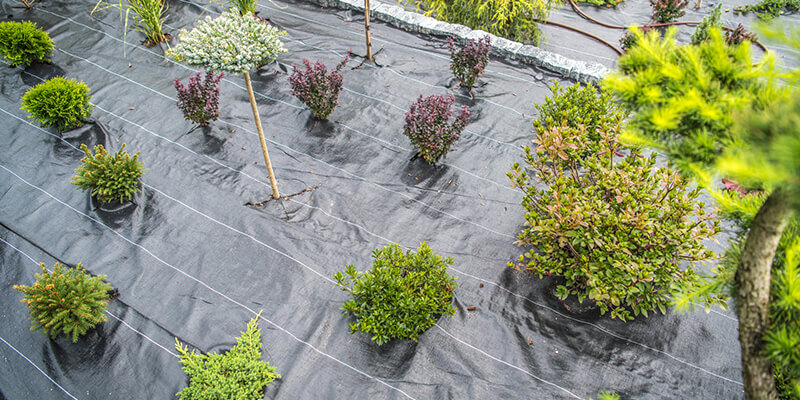Introduction
If you’ve ever spent a sunny afternoon pulling weeds, you know how crucial it is to prevent them in the first place. A polypropylene weed barrier fabric is not just about keeping your garden tidy; it’s an essential tool for ensuring the health and vibrancy of your plants.
This guide will explore options and help you understand which weed barrier fabric type best fits your garden’s unique needs. Whether you’re a seasoned gardener or just starting , making the right choice can save you time and effort, allowing you to enjoy the beauty of your garden with less hassle.
Remember, a thriving garden is a blend of the right elements, and choosing an effective weed barrier fabric is a key step in this process. Let’s dive in and find out how to keep those pesky weeds at bay!
Understanding Weed Barrier Fabric
Weed barrier fabric, often known as landscape fabric or ground cover, has become a popular solution in the ongoing battle against unwanted plant growth in gardens, farms, and landscaping projects. To fully appreciate the value and functionality of weed barrier fabric, it’s essential to look back at the traditional methods that were employed to prevent weed growth.
Choosing the right type of ground cover depends on your garden’s specific needs and the varieties of plants you have. Each type offers unique advantages and can suit different gardening needs.
When maintaining a healthy and attractive garden, choosing the right type of weed barrier fabric is crucial. These barriers come in various forms, each with its unique properties and suitability for different gardening needs. In the Old days, people used organic mulching and other types of weed barriers to prevent weeds in their gardens and lands. But every technology has some limitations.
Limitations:
- Permeability Issues: Older fabrics often restrict water and airflow to the soil, leading to pooling and reduced soil aeration.
- Durability Concerns: These materials were prone to quick degradation, especially under sunlight, requiring frequent replacements.
- Soil Health Impact: By blocking organic matter, these fabrics could hinder the natural enrichment of the soil.
- Environmental Impact: Made from non-biodegradable materials, their disposal raised environmental concerns.
- Weed Resistance: Some weeds could still grow through damaged or degraded fabrics, reducing their effectiveness.
The Advent of Weed Barrier Fabric
With the evolution of agricultural and gardening practices, the need for more efficient and less labor-intensive methods led to the development of weed barrier fabrics. These ground covers are made from materials like polypropylene, offering a modern solution to weed control. They work by providing a physical barrier that prevents weed growth while allowing water and air to penetrate, thus maintaining soil health.
Polypropylene Weed Barrier Fabric
The shift from traditional and organic mulches to polypropylene fabric weed barriers reflects a growing preference among gardeners and farmers for more sustainable and efficient weed control methods. This preference is influenced by the limitations observed in other types of weed barriers.
Polypropylene fabric weed barriers in woven material offer a superior balance between durability and environmental consideration. Their permeability is a significant advantage over organic mulches, as they allow air and water to pass through, ensuring that soil remains healthy and plants receive essential nutrients and hydration.
Pros
- Permeability: These barriers allow water and air to reach the soil, ensuring your plants receive nutrients and hydration.
- Longevity: Made to be durable, polypropylene fabric weed barriers can last several years, providing a long-term solution for weed control.
- Versatility: They are suitable for various garden types, from vegetable patches to ornamental flower beds.
Polypropylene weed barrier fabric balances efficiency and environmental consideration, making them a popular choice among gardeners seeking a sustainable yet effective solution to weed management.
Why Polypropylene Weed Barrier Fabric Is Better Than Organic Mulches

Fabric weed barriers offer several advantages over organic mulches, making them a preferred choice in many gardening scenarios. Here’s why:
- Breathability: Polypropylene Fabric weed barriers allow air to pass through. This means the soil underneath can breathe.
- Weed Control: Polypropylene fabric barriers are great at stopping weeds. They block sunlight, which weeds need to grow. However, unlike organic mulches, they don’t run the risk of containing weed seeds.
- Durability: Fabric barriers are tough and last a long time. They’re stronger than organic mulches, which break down and need replacing often. They also tend to be more durable.
- Easy to Use: Fabric barriers are simple to lay down and can be cut to fit any garden shape. This makes them more user-friendly compared to dealing with bulky organic mulches.
- Water Penetration: Unlike other weed barriers, polypropylene fabric weed barriers allow water to seep through. This means the soil underneath can get enough water, which is vital for healthy plant growth.
- Reusable: Polypropylene fabric weed barriers are not just a one-time solution. Their resilient nature allows them to be used repeatedly over multiple seasons.
This makes them a smart choice for gardeners looking for long-lasting, efficient weed problems.
Why Choose Anita Plastics For Your Weed Barrier Fabric
Choosing Anita Plastics for your weed barrier fabric is a smart decision for various reasons. Our products are crafted with superior-quality fabric materials for enhanced durability, complemented by a thoughtful design that effectively prevents weeds, ensuring a longer-lasting and more efficient fabric solution. The breathability of their fabric is a standout feature, allowing essential nutrients to reach the soil, which is crucial for healthy plant growth. Additionally, Anita Plastics’ top rated landscape fabric is easy to install and versatile, suitable for both small gardens and large landscaping projects.
Anita Plastics combines quality, ease of use, versatility, and affordability, making them an excellent choice for gardeners seeking reliable weed control solutions.
In conclusion, the right weed barrier fabric can make a significant difference in the health and appearance of your garden. Whether you opt for fabric, organic mulches, or alternative methods like ground cover plants and manual removal, each choice comes with its unique benefits and considerations.
Remember, a weed-free garden looks better and provides a healthier environment for your plants to thrive. By carefully choosing and properly maintaining your weed barrier fabric, you can enjoy a vibrant, flourishing garden with less effort and more satisfaction. So, take the time to assess your garden’s needs and choose a weed control method that works best for you .

